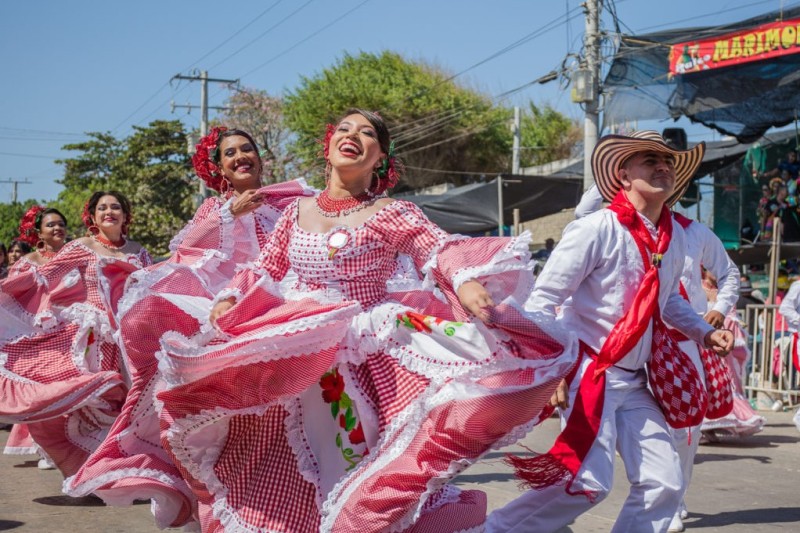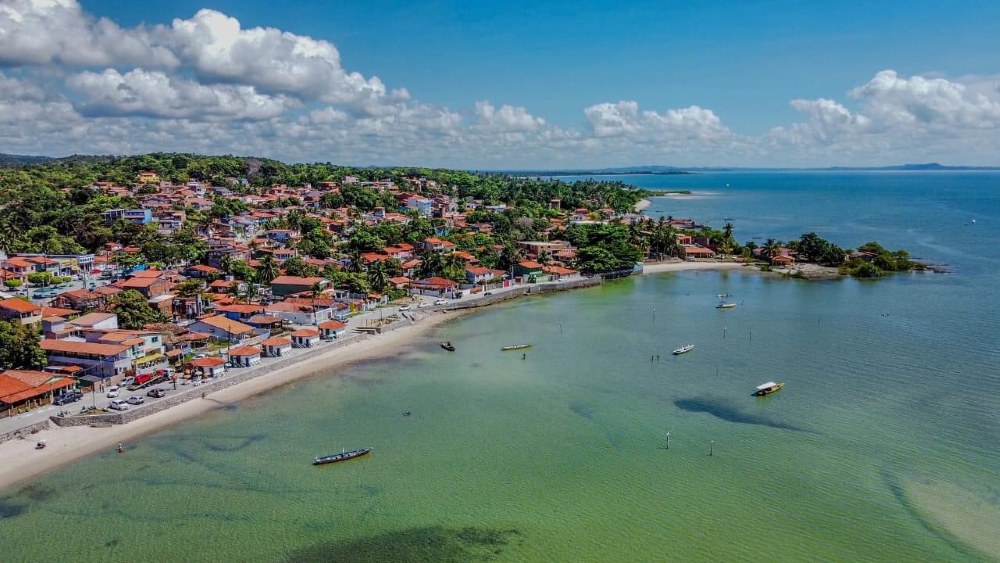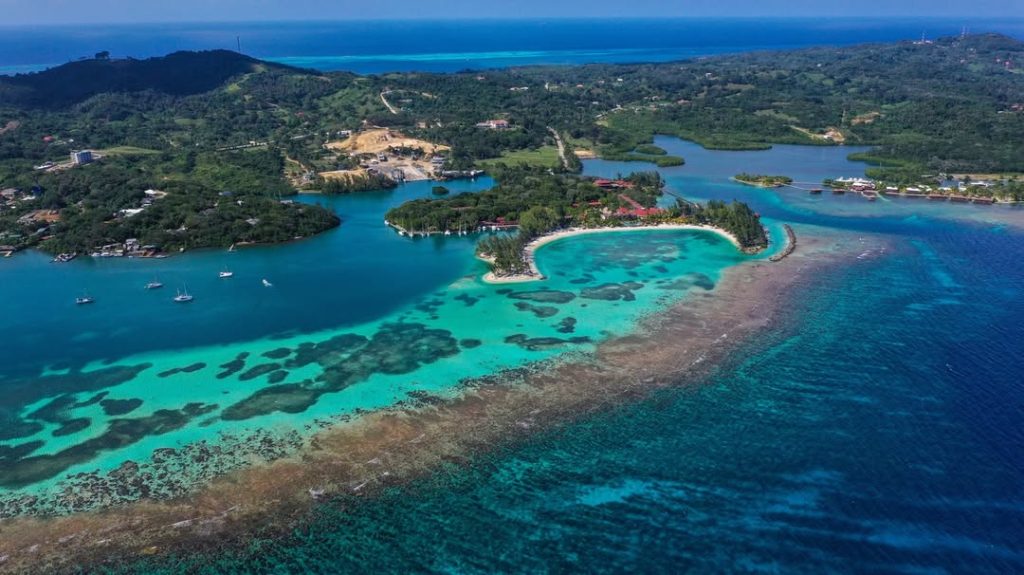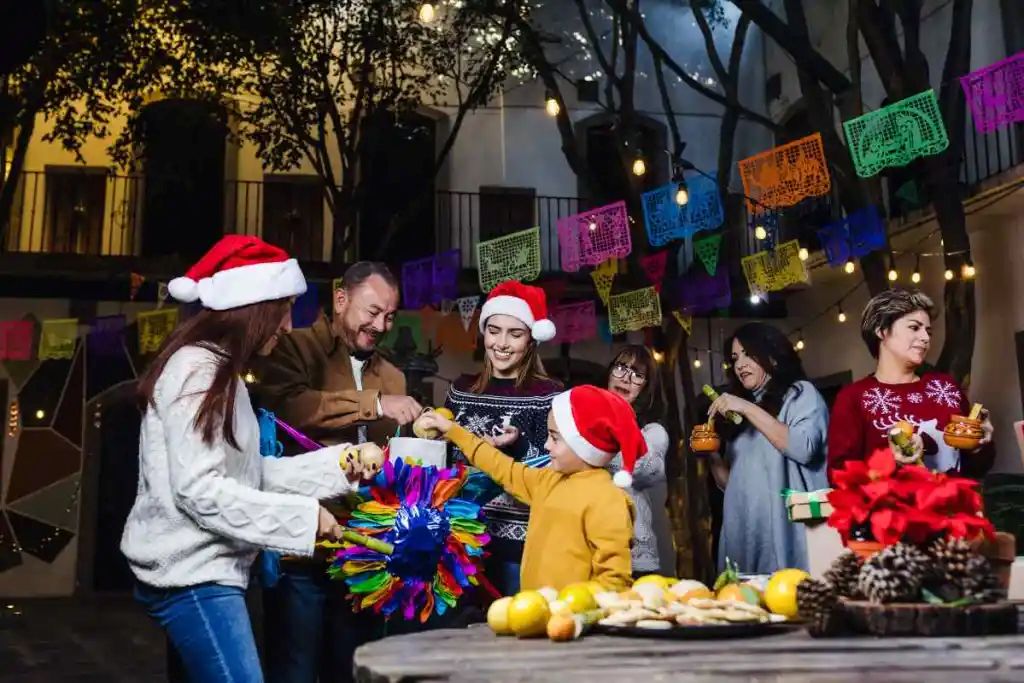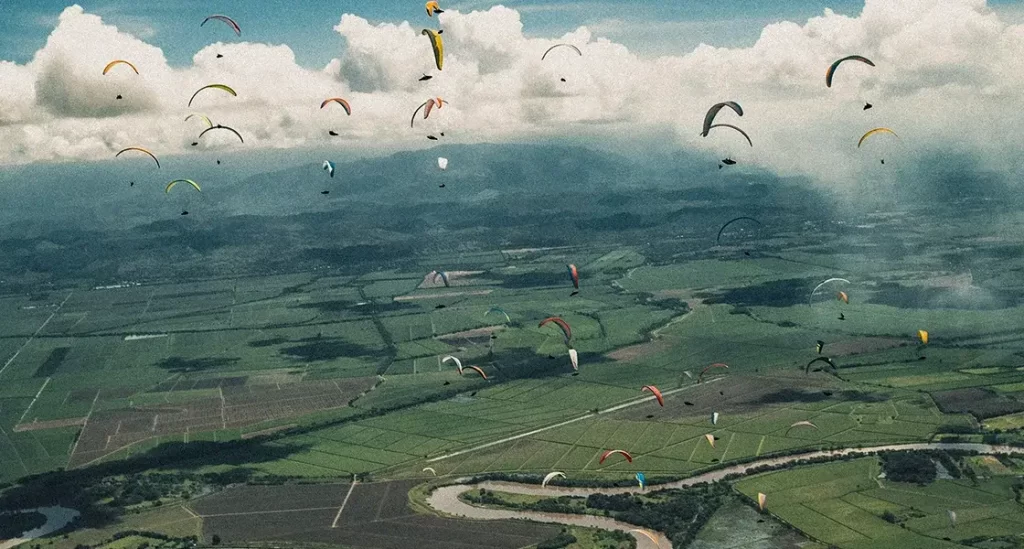Cumbia, the musical jewel of Colombia, embodies the essence of Caribbean culture through its captivating rhythms and rich history. Born on the banks of the Magdalena river, this traditional dance and music is the result of a unique fusion of indigenous, African and Spanish cultures. Today, Cumbia is much more than just a musical genre; it is a symbol of Colombian identity and a priceless cultural heritage.
The origins of Cumbia
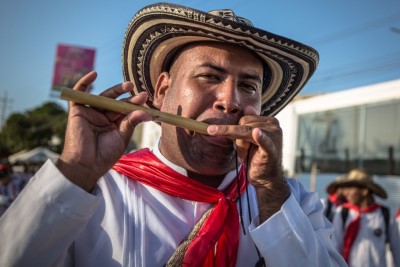
The history of Cumbia dates back to colonial times, when African slaves, indigenous people and Spanish settlers all contributed to its creation. African percussion, native flutes and European musical influences blended to create a deeply rhythmic and melodic music. Drums, particularly the tambora and tambor alegre, play a central role, accompanied by the cane flute, known as gaitas, maracas, the caña de millo and songs full of poetry and nostalgia.
Evolution and popularity
Over the centuries, Cumbia has evolved and spread beyond Colombia’s borders, gaining popularity throughout Latin America and beyond. It has incorporated modern elements while retaining its traditional essence. Contemporary artists have reinterpreted Cumbia, mixing styles such as rock, salsa and reggae, creating modern versions that resonate with younger generations.
The Cumbia Dance
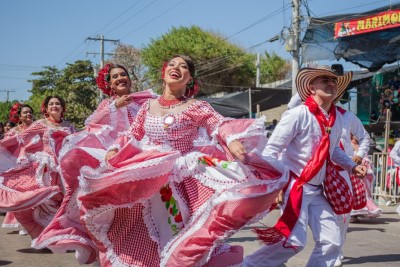
Cumbia dance is just as captivating as its music. The dancers, dressed in colourful traditional costumes, execute graceful, synchronised movements. The women, wearing long skirts, lift and wave them rhythmically, symbolising the waves of the sea. The men, often dressed in white, follow more discreet steps, accompanying the women with elegance and respect.
Leading Cumbia artists
Cumbia has been championed by a number of iconic artists who have contributed to its international renown. These include Lucho Bermúdez, one of the pioneers who popularised Cumbia nationally and internationally. Totó la Momposina, with his vibrant, authentic style, has also played a crucial role in keeping the Cumbia tradition alive and evolving. Andrés Landero, nicknamed the King of Cumbia, added his own unique touch with his trademark accordion playing. Among the genre’s leading songs, “La Pollera Colora“, “La Cumbia Cienaguera“ and “Colombia Tierra Querida“ stand out for their popularity and their ability to capture the very essence of Cumbia, becoming emblematic anthems of Colombian culture.
Cumbia in Popular Culture
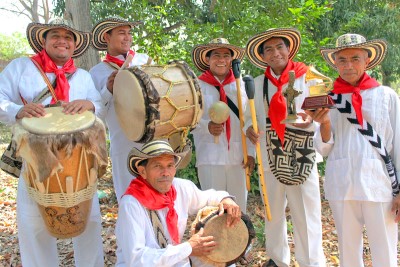
Cumbia has also left its mark on popular culture. Dedicated festivals are organised every year, attracting thousands of enthusiasts. Cumbia music resonates at carnivals, big cities and village festivals, where it is a constant reminder of Colombian cultural heritage.
Cumbia: Intangible Cultural Heritage
Recognising the importance of Cumbia, the Colombian government has declared this music to be intangible cultural heritage. This recognition aims to preserve and promote the Cumbia, ensuring that future generations can continue to appreciate and celebrate this heritage.
Cumbia, with its haunting rhythms and rich history, remains a symphony of the Colombian soul. It tells a story of cultural fusion, resilience and joy. For tourism professionals, promoting Cumbia means offering travellers an authentic plunge into the beating heart of Colombia. By discovering Cumbia, visitors don’t just listen to music; they enjoy an unforgettable cultural experience.

